The bacterial colony recovered from site A by group 9 was unable to be specifically identified. There were two possible species that the colony could have been: Psychrobacillus psychrodurans or Psychrobacillus psychrotoleran. These species were reassigned from the Bacillus genus to the Psychrobacillus genus in 2010 and this was outlined in a paper by Krishmanurthi, S, Ruckmani, A, Pukall, R, and Chakrabarti, T. Both of these species are gram positive.
Reference(s):
- Krishmanurthi, S, Ruckmani, A, Pukall, R, and Chakrabarti, T. Psychrobacillus gen. nov. and proposal for reclassification of Bacillus insolitus Larkin and Stokes, 1967, B. psychrotolerans Abd- El Rahman et al., 2002 and B. psychrodurans Abd-El Rahman et al., 2002 as Psychrobacillus insolitus comb. nov., Psychrobacillus psychrotolerans comb. nov., and Psychrobacillus psychroduran comb. nov. Systematic and Applied Microbiology. 2010. Nov. 7; 33(7)367-373.
Date Collected: February 9, 2017.
Methods for isolation and identification:
- A soil sample was scraped from the surface of the bank near group 9 site B.
- The colony that was used for 16S RNA Gene sequencing was light yellow/cream colored.
- The enzyme MSP1 was used to help identify the genus and species.
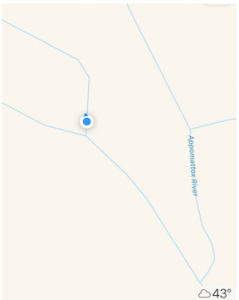
Figure 1: Site of collection
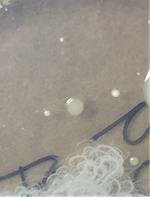
Figure 2: Colony Selected for Identification
Results:
Sequence Analysis: The undigested DNA strand was roughly 1,500 base pairs long. After MSP1 digestion the length of the DNA fragments were roughly 700, 450, and 230 base pairs long.
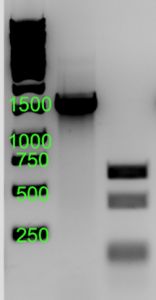
Figure 3: PCR amplification and MSP1 digestion
The middle column is the undigested DNA and the rightmost column
Figure 4a and 4b: Psychrobacillus psychrodurans and Psychrobacillus psychrodurans psychrotolerans sequence analysis
4a
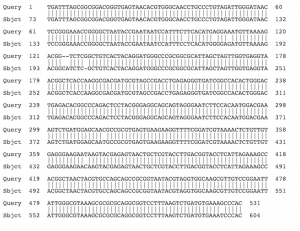
Sequence Analysis of 4a: The PCR product gave 531 base pairs of quality that were used to identify the species, psychrodurans, as one of the possible species of the colony at site A. The chromatogram of the species is available as a PDF Chromatogram 9A
4b
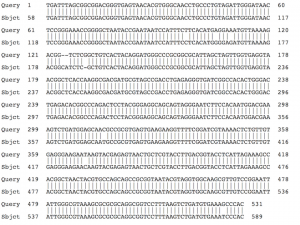
Sequence Analysis of 4b: The PCR product gave 531 quality base pairs that were used to identify the species, psychrotolerans, as one of the possible species of the colony at site A. The chromatogram of the species is available above in the PDF for figure 4a.
Contributed by: Colin Dominick BIOL 250 Spring 2017, Group 9